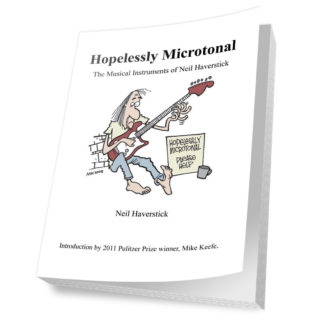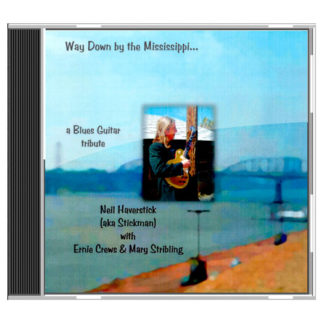In all my years of playing, I have found the least understood subject to be that of tuning. Not just tuning an instrument to sound good, but: WHY are the notes on a piano (or guitar) tuned in the arrangement that they are, namely, what we call 12 tone equal temperament? Equal temperament means, simply, that every note is exactly the same distance from each other…a convenient way to measure this distance is CENTS; 100 cents is C to C#, one key on a piano, or one fret on a guitar. (there are 1200 cents in the 12 tone octave). But, the 12 tone system we all use is actually a fairly new kid on the tuning block, so to speak…throughout history, most cultures throughout the world have used systems with smaller intervals than 100 cents, and this is where the term microtone comes into play. And Western musicians have also used temperaments with more (or less) notes than 12 tone temperament; some popular tunings are 17, 19, 22, 24, 31, 34, 53, and 72 notes per octave; 19 tone temperament, for example, has 63 cents per note; 34 tone has 35 cents between notes. Charles Ives and Bela Bartok both used quartertones in pieces (24 tones/octave), and Julian Carrillo had a 96 tone system…yow.
Equal temperaments were created to play music with chords that modulate through different keys; but besides equal temps, there are other, much older ways to tune: Just Intonation, which uses intervals from the Harmonic Series (the overtones formed any time a string is plucked, for example), and Pythagorean tuning, which involves stacking intervals of a 5th on top of each other (C-G-D-A-E-B, and up as far as you want, or, going down in 5ths, F-Bb-Eb-Ab-Db), and building scales from these intervals. It has been said that Indian music uses 22 unequal intervals, called srutis; Arabic and Turkish music can have many intervals, from 17 to 24 to 53 (also unequal); and with string glissandos and vocal bends, Eastern musicians are actually hitting more subtle intervals than these as well (the same goes for blues artists). And the ancient Chinese theorists stacked hundreds of 5ths on top of each other, and examined the scales which resulted (although they probably did not use all of those notes in practice). Early Western musicians used Pythagorean tuning for many years, then evolved into Meantone and Well Temperaments. Meantone and Well temps (Well temps were also called circulating temperaments) had 12 notes to the octave, but the notes were not equally spaced; in these systems, some keys would be more in tune than others. Many contemporary theorists think Bach’s famous Well Tempered Clavier was tuned to some sort of Well temp, but since Bach never specified his tuning preferences in his writings, there is still a lively debate (to say the least) about just how Bach tuned his instruments.
I play guitars with 19, 31, 34, and 36 equal tones, and a non equal 21 tone guitar, as well as fretless axes, which I tune to different Harmonics. I know guitarists who use 20 tones, 64 (!) unequal tones, 22 tones, 24 tones, 53 tones, and all points in between; and many modern synthesizers have the capacity to retune for microtonal scales. Tuning theory is vast and ancient, and it’s study and application can open many areas of exploration for creative musicians. I have found a new freedom as a player and composer, because I now have access to more subtle intervals, and the new scales and chords which come from them. I truly believe the study and application of different tunings is the pathway to the future of music. It is a wide open field, and the possibilities are endless…
Neil Haverstick (Stickman)


